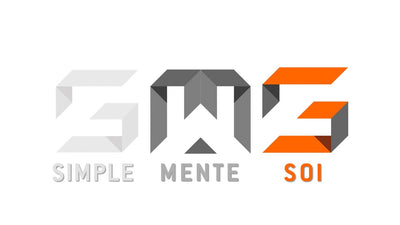The Vagus Nerve: A Key Player in Your Health and Well-Being

Let me introduce you to one of the most underrated VIPs of your body—no, not your heart or your brain (though they’re clearly doing a lot of heavy lifting). I’m talking about the vagus nerve. Ever heard of it? If not, you’re in for a treat—and if you have, then you already know it’s the behind-the-scenes mastermind of your health and well-being.
In the wellness world, we often talk about mindset, workouts, and green smoothies (guilty as charged). But honestly? If you’re not paying attention to your vagus nerve, you might be missing the health jackpot.
What Is the Vagus Nerve and Why Should You Care?
The vagus nerve (pronounced like “Vegas,” but without the gambling) is the longest cranial nerve in your body, running from your brainstem all the way to your gut—and hitting a ton of major organs along the way.
It’s the ultimate communicator. Think of it like your body’s wellness hotline, handling:
· Heart rate regulation
· Breathing and lung function
· Digestion
· Mood and mental health
· Immune system responses
It’s a major part of your parasympathetic nervous system, aka the “rest and digest” system. Basically, it’s the exact opposite of the “fight or flight” panic button. And in today’s stress-heavy world? We need more vagus nerve action.
The Vagus Nerve and Your Mental Health
Here's where things get really exciting: the vagus nerve doesn’t just influence your body—it has a direct line to your brain. Studies show that higher vagal tone (more on that in a sec) is linked to:
· Less anxiety and depression
· More resilience to stress
· Improved emotional regulation
Your vagus nerve can literally calm your mind, slow your thoughts, and stabilize your mood. It’s like having a built-in therapist on standby 24/7—if you know how to activate it.
There’s a growing body of evidence around vagus nerve stimulation (VNS) and its potential to treat mood disorders. For example, research out of Mass General and Northwell Health shows promising results for people with treatment-resistant depression.
Vagal Tone: The Fitness Level of Your Nervous System
Think of vagal tone as your nervous system’s “fitness score.” High vagal tone means your body can shift easily between stress and calm. Low vagal tone? That’s when stress lingers, digestion gets funky, and your emotional regulation takes a nosedive.
Signs of low vagal tone might include:
· Frequent colds or poor immunity
· Digestive issues like bloating, IBS, or reflux
· Anxiety or depression
· Rapid heart rate
· Trouble calming down after stress
The good news? You can train your vagus nerve to improve tone. And no, it doesn’t involve wearing electrodes on your neck (unless you’re into that sort of thing).
How the Vagus Nerve Supports Physical Health
Let’s break it down. When your vagus nerve is humming along happily, your body feels it:
1. Digestion
The vagus nerve signals your gut to digest food, absorb nutrients, and eliminate waste. If your vagus nerve isn’t firing properly, you might experience bloating, nausea, constipation, or indigestion.
2. Heart Rate and Blood Pressure
It helps keep your cardiovascular system balanced. That’s why techniques like deep breathing, which stimulate the vagus nerve, can lower blood pressure and heart rate.
3. Inflammation Control
Chronic inflammation is linked to everything from arthritis to Alzheimer’s. The vagus nerve acts as a brake, reducing unnecessary inflammation and calming the immune response.
4. Sleep Quality
Vagal activity increases during deep sleep phases. That means a strong vagus nerve = better, deeper, more restorative sleep.
5. Gut-Brain Connection
The vagus nerve is also key to the gut-brain axis—a bidirectional communication line between your brain and your digestive system. This helps explain why gut health and mood are so closely connected.
Simple (and Science-Backed) Ways to Stimulate Your Vagus Nerve
Ready to show your vagus nerve some love? Good—because it’s easier (and weirder) than you think.
1. Cold Exposure
Yes, I’m serious. Cold showers, ice baths, or even just splashing cold water on your face can stimulate the vagus nerve. It activates your parasympathetic response and boosts vagal tone.
2. Breathing Techniques
Deep, slow diaphragmatic breathing (especially with long exhales) signals safety to the brain. Try box breathing or 4-7-8 breathing.
According to studies, slow breathing not only reduces anxiety but also helps improve heart rate variability (HRV), a key indicator of vagal tone.
3. Humming, Singing, and Chanting
The vagus nerve is connected to your vocal cords. Humming your favorite tune, chanting “om,” or belting out karaoke can stimulate it. Yes, really.
4. Gargling
Another vocal hack—gargling vigorously can stimulate vagus activity. It may feel silly, but it works.
5. Laughter and Social Connection
Good company and genuine laughter aren’t just fun—they’re vagus workouts. Social engagement and smiling stimulate the nerve and improve emotional health.
According to research published by the National Institutes of Health, social bonding behaviors—like eye contact, vocalization, and physical touch—are some of the strongest natural vagus nerve activators.
6. Massage (Especially Neck and Feet)
Gentle massages around the carotid sinus (on your neck) and feet can enhance vagal activity. This is your excuse to book that spa day—doctor’s orders.
7. Probiotics and Gut Support
Because the vagus nerve connects to your gut, improving your gut microbiome with probiotics can enhance vagal signaling. Look for strains like Lactobacillus rhamnosus or Bifidobacterium infantis.
The Future: Vagus Nerve Stimulation (VNS) in Medicine
We’re not just talking yoga and breathwork here. The medical world is also tapping into the power of the vagus nerve—literally.
Vagus Nerve Stimulation (VNS) is an FDA-approved treatment for conditions like:
· Epilepsy
· Treatment-resistant depression
· Chronic pain
· PTSD
· Inflammatory bowel disease
It involves implanting a small device that electrically stimulates the nerve, helping regulate body functions and reduce symptoms. Non-invasive VNS devices are also becoming more accessible, offering promise for those with chronic stress and mood disorders.
Clinical studies are showing that non-invasive VNS may also improve outcomes in people with fibromyalgia and even some autoimmune conditions.
Why This Matters More Than Ever
In today’s always-on, constantly-scrolling, overstimulated world, our sympathetic nervous systems are working overtime. And guess who’s left picking up the pieces? Yep, the vagus nerve.
If you’re dealing with burnout, chronic stress, gut issues, mood swings, or just feel like you’re stuck in “go-go-go” mode, your vagus nerve might need some TLC.
Let’s be real: our health systems have focused for years on reaction rather than prevention. But the vagus nerve offers a proactive, deeply holistic way to support both mental and physical health. It’s time we give it the spotlight it deserves.
The best part? You don’t need a fancy biohacking lab to take action. You already have the tools:
· Your breath
· Your voice
· Your habits
· Your ability to slow down
Final Thoughts: Train the Nerve That Heals You
Here’s the wild thing—this nerve has been quietly working for you your entire life. It’s been your calm in chaos, your rest after the storm, your built-in mechanism for healing.
And now that you know how it works, you can work with it.
So yes, go to the gym. Eat the kale. Take the vitamins. But don’t forget the vagus nerve—the unsung hero that could be the key to better health, deeper well-being, and a calmer, more connected life.
It’s not just science. It’s self-care. And you deserve it.
Ready to hum your way to health?
Follow our Simplementesoi blog for more mindfulness tips and insights. Read our blog to stay healthy in any possible aspect.


Dejar un comentario